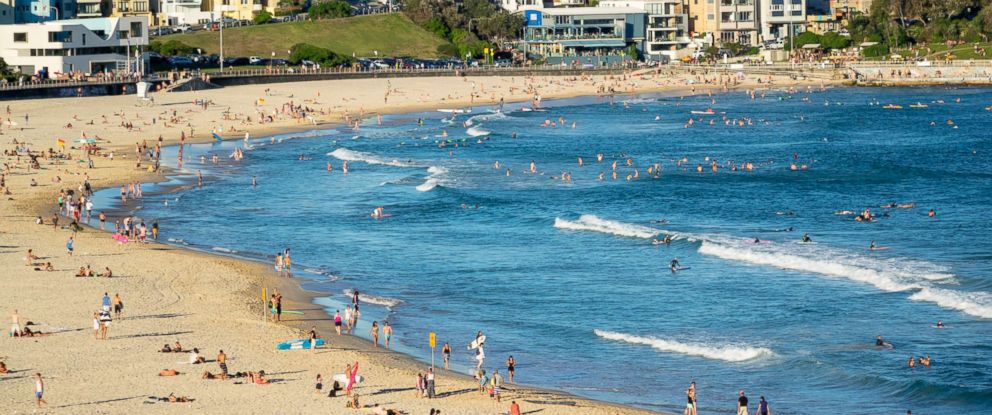best astrologer from punjab in Australia-bhrigupandit
call or whatsap +91 98726 65620
Best and Famous Astrologer in ludhiana - bhrigupandit
For past many years, our bhrigupandit ji has been recognized as being the best astrologer inAustralia/ ludhiana, considering all qualities, capabilities, achievements, and expertise described above. Chandigarh,ludhiana and Amritsar of Punjab have long been his immensely loved cities for decades, and consequently, the bulk portions of the constantly growing population of these cities have been getting benefited by him lavishly. Besides astrology, many other fields practiced by him in cities all across Punjab, like vashikaran, vastu, psychic reading, numerology, natural healing, etc., have also been offering very successful results.
Astrology Services by bhrigupandit www.bhrigupandit.com in ludhiana/Australia
To serve immensely and remarkably over one million of its inhabitants, our guru ji offers the whole gamut of astrology services in Amritsar with full accountability and generosity. So far, a large fraction of this massive population has been benefited greatly by him, and consequently, he is now well-eminent as a trustworthy astrologer bhrigupanditji ludhiana, owing to his ever-growing popularity and renown.
Through his superb, swift, and safe astrology services, the following problems and adversities are certainly solvable or terminable:Vashikaran specialist
love problem solution
get your ex love back
black magic removal
match making
Disturbances in love or romance- problems in professional career
- losses in business
- Uncertainties
- worsening relationship between husband and wife
- Problems and obstacles to love marriage, arranged marriage, or inter-caste marriage
- Absence of peace, comfort, and progress in home
- Troubles and ailments related with health and vitality
- Disinclination towards education
- Ignorance regarding the best career options
- Hassles being experienced in re-acquiring the lost love
- Slow or stagnant career in any field unstable financial situations
- clashes with relatives, friends, or neighbors
- Diverse social problems
- And, problems in other areas of life
- Call us: +91-98726-65620
- E-Mail us: info@bhrigupandit.com
- Website: http://www.bhrigupandit.com
- FB: https://www.facebook.com/astrologer.bhrigu/notifications/
- Pinterest: https://in.pinterest.com/bhrigupandit588/
- Twitter: https://twitter.com/bhrigupandit588
- Let Us Know About Australia
- Australia, officially the Commonwealth of Australia, is a sovereign country comprising the mainland of the Australian continent, the island of Tasmania, and numerous smaller islands. It is the largest country in Oceania and the world's sixth-largest country by total area.
- The neighbouring countries are Papua New Guinea, Indonesia, and East Timor to the north; the Solomon Islands and Vanuatu to the north-east; and New Zealand to the south-east. The population of 25 million is highly urbanised and heavily concentrated on the eastern seaboard.Australia's capital is Canberra, and its largest city is Sydney. The country's other major metropolitan areas are Melbourne, Brisbane, Perth, and Adelaide.
- Indigenous Australians inhabited the continent for about 65,000 years prior to European discovery with the arrival of Dutch explorers in the early 17th century, who named it New Holland. In 1770, Australia's eastern half was claimed by Great Britain and initially settled through penal transportation to the colony of New South Wales from 26 January 1788, a date which became Australia's national day.
- The population grew steadily in subsequent decades, and by the time of an 1850s gold rush, most of the continent had been explored and an additional five self-governing crown colonies established. On 1 January 1901, the six colonies federated, forming the Commonwealth of Australia. Australia has since maintained a stable liberal democratic political system that functions as a federal parliamentary constitutional monarchy, comprising six states and ten territories.
- Being the oldest, flattest and driest inhabited continent, with the least fertile soils, Australia has a landmass of 7,617,930 square kilometres (2,941,300 sq mi). A megadiverse country, its size gives it a wide variety of landscapes, with deserts in the centre, tropical rainforests in the north-east and mountain ranges in the south-east. Its population density, 2.8 inhabitants per square kilometre, remains among the lowest in the world. Australia generates its income from various sources including mining-related exports, telecommunications, banking, and manufacturing.
- Australia is a highly developed country-
- Australia is a highly developed country, with the world's 14th-largest economy. It has a high-income economy, with the world's tenth-highest per capita income. It is a regional power, and has the world's 13th-highest military expenditure. Australia has the world's eighth-largest immigrant population, with immigrants accounting for 29% of the population.
 Name of Australia
Name of Australia- The name Australia is derived from the Latin Terra Australis , a name used for a hypothetical continent in the Southern Hemisphere since ancient times.When Europeans first began visiting and mapping Australia in the 17th century, the name Terra Australis was naturally applied to the new territories.
- Until the early 19th century, Australia was best known as "New Holland", a name first applied by the Dutch explorer Abel Tasman in 1644 (as Nieuw-Holland) and subsequently anglicised. Terra Australis still saw occasional usage, such as in scientific texts.The name Australia was popularised by the explorer Matthew Flinders, who said it was "more agreeable to the ear, and an assimilation to the names of the other great portions of the earth". Several famous early cartographers also made use of the word Australia on maps.
- Gerard Mercator (1512–94) used the phrase climata australia on his double cordiform map of the world of 1538, as did Gemma Frisius (1508-55), who was Mercator’s teacher and collaborator, on his own cordiform wall map in 1540. Australia appears in a book on astronomy by Cyriaco Jacob zum Barth published in Frankfurt-am-Main in 1545.
- The first time that Australia appears to have been officially used was in April 1817, when Governor Lachlan Macquarie acknowledged the receipt of Flinders' charts of Australia from Lord Bathurst. In December 1817, Macquarie recommended to the Colonial Office that it be formally adopted. In 1824, the Admiralty agreed that the continent should be known officially by that name. The first official published use of the new name came with the publication in 1830 of The Australia Directory by the Hydrographic Office.
- Colloquial names for Australia include "Oz" and "the Land Down Under" (usually shortened to just "Down Under"). Other epithets include "the Great Southern Land", "the Lucky Country", "the Sunburnt Country", and "the Wide Brown Land". The latter two both derive from Dorothea Mackellar's 1908 poem "My Country".
- History of Australia : Indigenous Australians
- Human habitation of the Australian continent is estimated to have begun around 65,000 to 70,000 years ago, with the migration of people by land bridges and short sea-crossings from what is now Southeast Asia. These first inhabitants were the ancestors of modern Indigenous Australians. Aboriginal Australian culture is one of the oldest continual civilizations on earth.
- Aboriginal rock art in the Kimberley region of Western Australia
- At the time of first European contact, most Indigenous Australians were hunter-gatherers with complex economies and societies. Recent archaeological finds suggest that a population of 750,000 could have been sustained.
- Indigenous Australians have an oral culture with spiritual values based on reverence for the land and a belief in the Dreamtime. The Torres Strait Islanders, ethnically Melanesian, obtained their livelihood from seasonal horticulture and the resources of their reefs and seas. The northern coasts and waters of Australia were visited sporadically by Makassan fishermen from what is now Indonesia.
- European arrival : European exploration of Australia
- Portrait of Captain James Cook, the first European to map the eastern coastline of Australia in 1770
- The first recorded European sighting of the Australian mainland, and the first recorded European landfall on the Australian continent (in 1606), are attributed to the Dutch.
- The first ship and crew to chart the Australian coast and meet with Aboriginal people was the Duyfken captained by Dutch navigator, Willem Janszoon. He sighted the coast of Cape York Peninsula in early 1606, and made landfall on 26 February at the Pennefather River near the modern town of Wei pa on Cape York.Later that year, Spanish explorer Luís Vaz de Torres sailed through, and navigated, Torres Strait islands.
- The Dutch charted the whole of the western and northern coastlines and named the island continent "New Holland" during the 17th century, but made no attempt at settlement. William Dampier, an English explorer and privateer, landed on the north-west coast of New Holland in 1688 and again in 1699 on a return trip.In 1770, James Cook sailed along and mapped the east coast, which he named New South Wales and claimed for Great Britain.
- With the loss of its American colonies in 1783, the British Government sent a fleet of ships, the "First Fleet", under the command of Captain Arthur Phillip, to establish a new penal colony in New South Wales. A camp was set up and the flag raised at Sydney Cove, Port Jackson, on 26 January 1788, a date which became Australia's national day, Australia Day. A British settlement was established in Van Diem en's Land, now known as Tasmania, in 1803, and it became a separate colony in 1825.
- Heron Island, a coral cay in the southern Great Barrier Reef
- The Great Barrier Reef, the world's largest coral reef, lies a short distance off the north-east coast and extends for over 2,000 kilometers (1,240 mi). Mount Augustus, claimed to be the world's largest monolith, is located in Western Australia. At 2,228 meters (7,310 ft), Mount Kosciusko is the highest mountain on the Australian mainland.
- Even taller are Mawson Peak (at 2,745 metres or 9,006 feet), on the remote Australian external territory of Heard Island, and, in the Australian Antarctic Territory, Mount McClintock and Mount Menzies, at 3,492 metres (11,457 ft) and 3,355 metres (11,007 ft) respectively.
- Australia's size gives it a wide variety of landscapes, with tropical rain forests in the north-east, mountain ranges in the south-east, south-west and east, and dry desert in the center. The desert or semi-arid land commonly known as the outback makes up by far the largest portion of land. Australia is the driest inhabited continent; its annual rainfall averaged over continental area is less than 500 mm. The population density, 2.8 inhabitants per square kilometer, is among the lowest in the world, although a large proportion of the population lives along the temperate south-eastern coastline.
- Call us: +91-98726-65620




Comments
Post a Comment